Chapter 11 Energy and industry
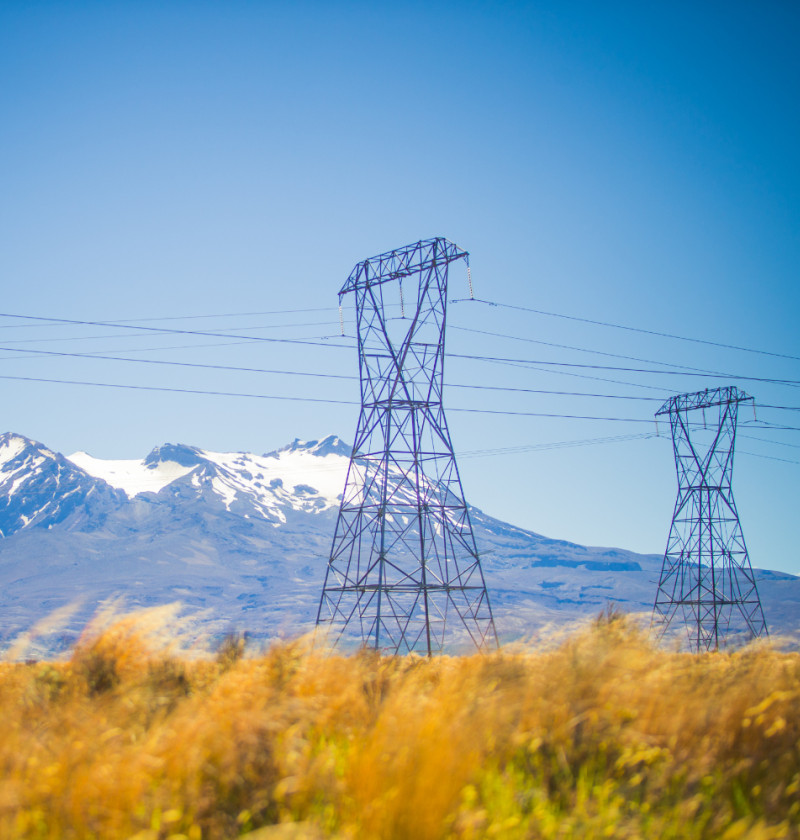
Download a PDF version of this chapter [PDF, 843 KB]
By 2050, our energy system is highly renewable, sustainable and efficient, and supports a low-emissions and high-wage economy. Energy is accessible and affordable and supports the wellbeing of all New Zealanders. Energy supply is secure, reliable and resilient, including in the face of global shocks.
|
Projected emissions without the initiatives in this plan
|
72.4 Mt CO2-e |
|
Projected average annual emissions without the initiatives in this plan |
18.1 Mt CO2-e |
| Projected percentage of total gross emissions without the initiatives in this plan | 22 per cent |
|
Estimated emissions reduction from the initiatives in this plan |
2.7 to 6.2 Mt CO2-e |
The energy and industry sectors make up just over a quarter of our total gross greenhouse gas emissions.
Aotearoa New Zealand is well-positioned to tackle emissions in the energy and industry sectors because of our high levels of renewable electricity. Decarbonising the energy sector has a range of benefits – creating opportunities to reduce emissions in other sectors, reducing reliance on global fossil fuel markets, reducing costs through energy efficiency and clean technology, and creating high-wage job opportunities.
Reduce our reliance on fossil fuels and exposure to volatile global fuel markets, and support the switch to low-emissions fuels by:
setting a pathway to reduce reliance on fossil gas through a gas transition plan
increasing access to low-emissions fuels, including developing a hydrogen roadmap.
Reduce emissions and energy use in industry by:
supporting industry to improve energy efficiency, reduce costs and switch from fossil fuels to low-emissions alternatives through the Government Investment in Decarbonising Industry fund [Energy Efficiency and Conservation Authority website] and the Energy Efficiency and Conservation Authority’s business programmes
banning new low- and medium-temperature coal boilers and phasing out existing ones by 2037.
Set a strategy and targets to guide us to 2050 by:
setting a target for 50 per cent of total final energy consumption to come from renewable sources by 2035
developing an energy strategy to address strategic challenges in the energy sector and signal pathways away from fossil fuels.
The Government’s 2050 vision for energy and industry is for Aotearoa New Zealand to have a highly renewable, sustainable and efficient energy system supporting a low-emissions economy.
To achieve this future, Aotearoa needs to move away from fossil fuels and shift towards increased renewable electricity generation, and the development and use of other low-emissions fuels.
A well-planned transition can help reduce energy costs for businesses and New Zealanders, increase energy independence and create high-wage jobs in areas such as hydrogen, bioenergy and electrification. It can also be an opportunity to improve our productivity as we adopt clean technologies and improve energy efficiency.
In 2019, emissions from the energy and industry sectors made up just over a quarter (27 per cent) of our total gross emissions.
The energy and industry sectors are essential to the economy and the lives of New Zealanders. Their performance affects the competitiveness of Aotearoa businesses and the cost and quality of many goods and services. Energy heats our homes and powers our transport. Industry accounts for around 11 per cent of real gross domestic product and employs 9 per cent of our workers.
Aotearoa New Zealand's energy system is highly renewable by international standards. Just over 40 per cent of our total primary energy supply* and nearly 28 per cent of our total final energy consumption** comes from renewable energy sources.
* Total primary energy supply is the amount of energy available for use in Aotearoa, accounting for imports and exports.
** Total final energy consumption is the total energy consumed by end users, such as households and industry. It excludes energy that the energy sector uses itself, energy transformation and distribution losses.
Aotearoa meets much of its energy needs by producing energy domestically. The transition to a more renewable energy system will strengthen our energy independence and ensure our energy supply is affordable and secure in the face of global shocks. The actions in this plan will achieve this by:
References to current energy and industry emissions are based on to the 2019 greenhouse gas estimates from New Zealand’s Greenhouse Gas Inventory 1990-2020 published in April 2022.
Energy and industry emissions estimates are around 6 percent higher than the previous New Zealand’s Greenhouse Gas Inventory 1990-2019 published in April 2021. This rise is due to a reallocation of fuel use from the transport sector to the rest of the energy sector and implies that underlying road transport fuel efficiency is higher than previously estimated.
Projected emissions for energy and industry, including emissions reductions, are based on the previous 1990-2019 greenhouse gas inventory, because the energy and industry models used could not be updated in time for publication. This means that projected energy and industry emissions and emissions reductions are likely to be higher when the Government revises its projections using the latest inventory data.
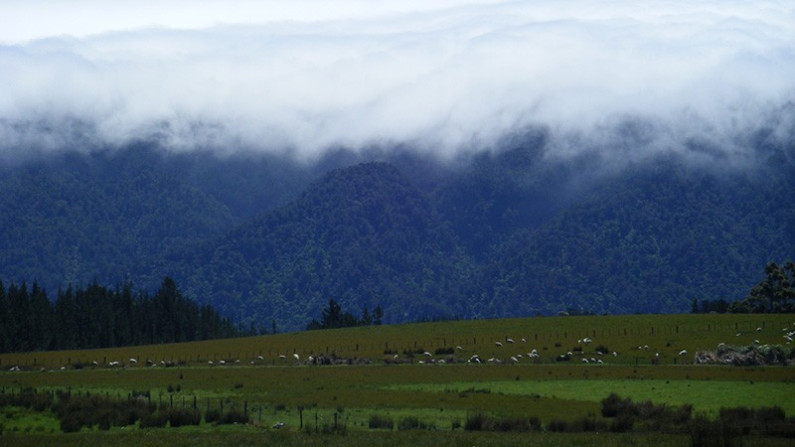
Silver Fern Farms received NZ$1 million co-funding from the Government Investment in Decarbonising Industry (GIDI) fund for a NZ$2.6 million project at its Pareora processing site, south of Timaru. With the support of GIDI co-funding, the company will install a high temperature heat pump to preheat hot water for the processing plant, shifting heating load away from the existing coal boiler. It is the company’s third successful project under the GIDI fund.
The benefits will be substantial and include reductions in coal consumption, the associated reduction in greenhouse gas emissions, cost savings as the heat pump system generates hot water at a lesser running cost than coal boilers, and reduction in remaining water heating loads, opening up a variety of possibilities to achieve the final water heating needed.
The current boiler used 27.3 gigawatt hours of coal energy input in 2020 to produce hot water for the site. Using coal to generate this energy produces 8,389 t CO2-e of emissions each year compared to the proposed project emissions of 2,813 t CO2-e per year – a 66 per cent reduction. The annual net emissions savings from implementing this project are 5,576 t CO2-e.
Silver Fern Farms has previously taken a structured approach to reducing energy and carbon emissions, including metering, gap analysis, conservation measures and efficiency gains. The GIDI funding enables the company to accelerate its coal related projects to reduce its carbon footprint in a much shorter timeframe.
The new system is expected to be fully commissioned by the end of December 2022.
Actions in the energy and industry sectors help to achieve emissions reductions in other sectors, including transport and building and construction. They also contribute to new economic opportunities. For example:
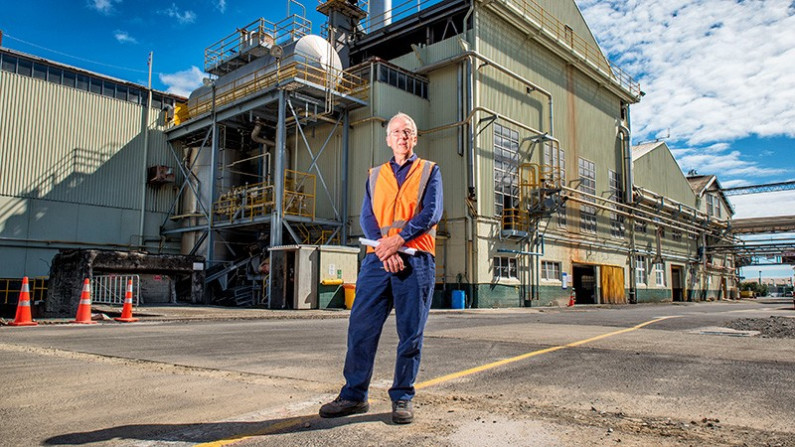
Whakatāne Mill produces 150,000 tonnes of paperboard a year and runs 24 hours a day, 7 days a week. With over 170 people working at the mill, it is the biggest employer in the region and a significant contributor to the local economy. The GIDI fund is supporting the mill to invest in a new filter system that will significantly reduce emissions and water waste.
The project will install a disc filter and other equipment to return the mill’s waste water to be reused. This circular system saves on water, raw materials, and the energy used to heat the water, delivering significant benefits, including:
This section outlines the Government’s approach to reducing energy and industry emissions. The short-term focus is to reduce energy and industry emissions through the uptake of new and existing technologies, and ensure our markets and regulations are fit for a low-emissions future. To enable future action, the Government will clearly communicate the approach to decarbonisation and diversification into new fuels.
The following actions to reduce energy and industry emissions will support equitable and inclusive outcomes. This means working to improve energy efficiency and affordability as Aotearoa transitions to a low-emissions economy.
To achieve an equitable transition for Māori, the Government will uphold Te Tiriti o Waitangi, recognise Māori interests in the energy and industry sectors, and work with tangata whenua as policies to transition the energy and industry sectors are developed and implemented. This is critical, especially when identifying challenges and ensuring they are addressed in a way that enables and empowers Māori.
Efforts to drive emissions reductions in the energy and industry sectors focus on five interdependent areas. The actions in these focus areas complement the New Zealand Emissions Trading Scheme (NZ ETS). They are designed to address barriers in responding to the emissions price and minimise impacts on households, businesses, communities and Māori, while unlocking health and other benefits.
Improving our energy efficiency – using less energy to perform the same task – can reduce emissions and costs. Optimising our energy use and energy productivity will support economic prosperity and an equitable transition as we decarbonise.
Energy efficiency can also improve our wellbeing by reducing household energy bills. We can take actions to get the most out of the energy Aotearoa generates and help households, communities and businesses manage their energy demand.
Electrical energy efficiency and measures to help manage electricity demand will also help to reduce emissions from the electricity system (focus area 2). It will also help to reduce both demand-side costs (eg, allowing smaller heat appliances) and supply-side costs (eg, less investment needed in new generation, transmission and distribution capacity).
This will help the electricity system to more easily meet demand and lower the costs of electrifying transport and process heat.
This focus area includes actions to improve:
Improved energy efficiency reduces the need for new electricity generation and ensures New Zealanders can affordably light and heat their homes, power their businesses, and meet other energy needs. Supporting households and businesses to actively manage their energy demand gives them greater control, including over their costs.
* The Government is considering feedback on proposals in the Energy efficient products and services [PDF, 698 KB] discussion document, which was released for public consultation in June 2021.
The state sector is a significant energy user. Improving energy efficiency and switching to low-emissions fuels and technologies will reduce emissions and demonstrate leadership as Aotearoa transitions.
Our high level of renewable generation means our electricity system is well positioned to help other sectors – such as transport and industry – move away from fossil fuels and reduce emissions.
Transpower New Zealand estimates Aotearoa will need 70 per cent more renewable generation to electrify process heat and transport, and decarbonise the economy.*
To transition our electricity system to 2050, we need to:
* A Roadmap for Electrification: Decarbonising transport and process heat [PDF, 6 MB]
Aotearoa will need to generate more electricity from existing low-emissions technologies such as wind and solar. We will also need to increase our use of new technologies, for example offshore wind, and adopt electricity storage technologies such as pumped hydro and large-scale batteries.
Our transition to a more renewable electricity system needs to be orderly, affordable, maintain reliability and incentivise businesses to switch to low-emissions fuels.
Work is already underway to ensure the electricity market and system can operate with an increasing proportion of renewable electricity. This includes how to manage dry-year risk* and meet household winter heating needs in an affordable way.
* Aotearoa New Zealand’s electricity system has a high level of hydro-generation. In dry years, water for hydro-generation is limited. The electricity shortfall has usually been met using coal and gas generation – emissions that Aotearoa would like to avoid in the future.
Higher renewable electricity generation and electrification will reduce emissions and provide Aotearoa with greater energy independence. But we will need the right transmission and distribution infrastructure to cope with renewable generation’s more variable peaks and flows.
Coordinated investment in network upgrades and extensions will be required to generate economies of scale that benefit generators, distributors and electricity users. Potential disadvantages for those who invest first will need to be addressed.
New technologies that change the time and direction of peak flows in electricity networks will require different approaches to network design and operation to ensure reliability.
Aotearoa will need to replace fossil fuels with low-emissions fuels such as bioenergy and hydrogen to:
This focus area includes actions to:
The Government is working to reduce demand for coal for process heat and electricity generation. This includes investigating options to manage dry-year risk through the New Zealand Battery Project (focus area 2). A ban on new low- and medium-temperature coal boilers, as well as phasing out existing coal boilers by 2037, will further reduce demand for coal (focus area 4). Actions to manage the phase-out of fossil gas are outlined below.
Phasing out fossil fuels in energy and industry will reduce building related emissions as noted in chapter 12: Building and construction.
Phasing out fossil gas presents short-term and long-term challenges, including balancing capital investment with declining fossil gas use, fossil gas affordability and the risk of stranded network assets. The Government is working to address these challenges and set out a pathway for the fossil gas sector.
Bioenergy* will be significant for reducing emissions, with widespread potential application in the energy, industry and transport sectors. Green hydrogen will also be significant for reducing emissions in areas of the economy that are hard to electrify, such as high-temperature industrial processes, and potentially in some parts of the heavy transport sector, including aviation.
* Developing bioenergy as a low-emissions fuel links to other areas of focus and actions in this plan. Initiatives relating to developing bioenergy supply are outlined in chapter 9: Circular economy and bioeconomy and chapter 12: Building and construction. Initiatives relating to supporting bioenergy demand are included in focus areas 2 and 4 of this chapter.
By 2050, Aotearoa industries will need to use low-emissions energy efficiently – both to produce the materials and goods we need and to meet consumer preferences. In the short term, changing how we use energy in industry, particularly for process heat, will be crucial to meeting our early emissions budgets.
This focus area includes actions to:
Energy efficiency improvements and fuel switching will benefit businesses by reducing energy use, and exposure to NZ ETS costs, improving productivity, and increasing the economic resilience of domestic producers. These investments can also stimulate economic growth, job retention and creation, and help manage a smooth transition.
The Government is undertaking significant action to decarbonise process heat. These actions – alongside actions to encourage greater energy efficiency, support electrification and increase the uptake of low emissions fuels (outlined under other focus areas) – will support industrial decarbonisation and will provide signals to minimise investment uncertainty in the long term.
The Government will continue to fund fuel switching under the GIDI fund (see the Whakatāne Mill case study in this chapter). Thirty-eight projects received co-funding in the first and second rounds of the GIDI fund to help transition away from fossil fuels. Together, they will make emissions reductions of 6.56 Mt CO2e over their lifetimes.
Opportunities to accelerate emissions reductions in industrial low- and medium-temperature process heat are significant, low cost, and can also improve productivity and increase energy resilience.
The Government is acting to decarbonise process heat and reduce industrial emissions. These actions, alongside actions to encourage greater energy efficiency, support electrification and increase low-emissions fuel use, will support industrial decarbonisation and provide clear investment signals for the future.
* EECA's energy transition accelerator provides bespoke technical support for large emitters to develop long-term transition plans, helping to mitigate risks.
Some large firms that play a significant role in Aotearoa New Zealand’s economy have high-temperature heat requirements and few technologically or commercially viable alternatives to fossil fuel use. Examples are steel-making or cement-making. These firms can play a significant role in the economic and social wellbeing of our regions and in our economic resilience. To transition, they may need innovation and new technology.
To guide achievement of the vision for 2050 – and provide clarity to the energy sector – the Government will develop strategies and set targets for the energy system. Setting targets and monitoring energy system indicators will help measure progress towards our emissions reductions goals.
This focus area includes actions to:
The Government is setting a target of 50 per cent of total final energy consumption (TFEC) coming from renewable sources by 2035. In 2020, Aotearoa New Zealand’s renewable energy share of TFEC was 28 per cent.
A 50 per cent target is ambitious. It signals commitment to reducing emissions and highlights the need for transformation across the energy system – action that goes beyond business as usual. Success will depend on using our energy system to its best advantage in order to decarbonise other areas of the economy, such as transport and industry.
The renewable energy target builds on the Government’s aspirational target of 100 per cent renewable electricity by 2030.
The Government will develop strategies to achieve its vision for a net-zero economy in 2050, where energy is accessible and affordable, secure and reliable, and supports New Zealanders’ wellbeing. This includes developing an energy strategy to address strategic challenges in the energy sector, and signal pathways away from fossil fuels.
The scope of the energy strategy is not yet confirmed, but may be structured around focus areas 1 to 4 in this chapter. It could also consider broader objectives beyond each focus area to meet our vision and support the wellbeing of New Zealanders, including how to manage pathways to ensure that:
* The New Zealand Energy Efficiency and Conservation Strategy 2017–2022 sets the overall policy direction for government support and interventions that promote energy efficiency, energy conservation and use of renewable sources of energy. The NZEECS guides the EECA’s work programme. The climate change and energy system priorities have changed since the current NZEECS was published in 2017.
Aotearoa is on track to meet the energy and industry sector sub-targets for the first emissions budget period, as shown in figure 11.1. The energy and industry sector is also on track to meet or exceed the sub-targets for the second and third emissions budget periods, also shown in figure 11.1. This includes emissions reductions from the actions in this plan and assumes that the NZ ETS price follows He Pou a Rangi – Climate Change Commission’s expected price path.
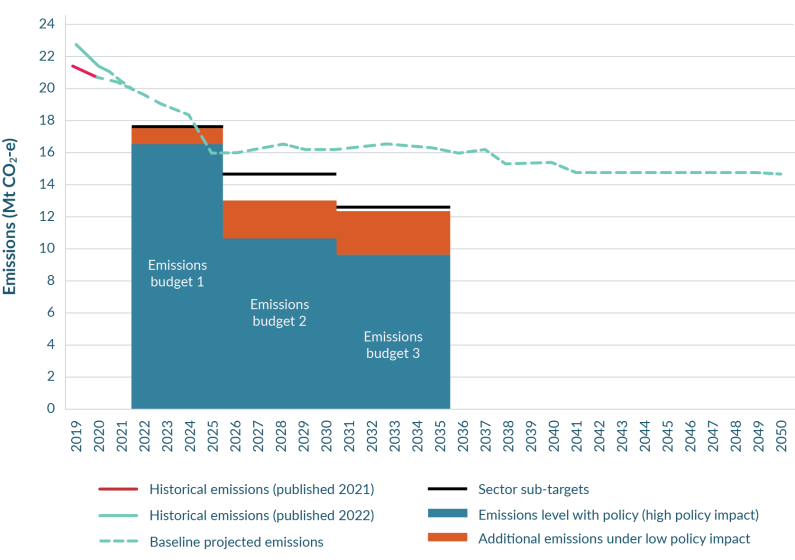
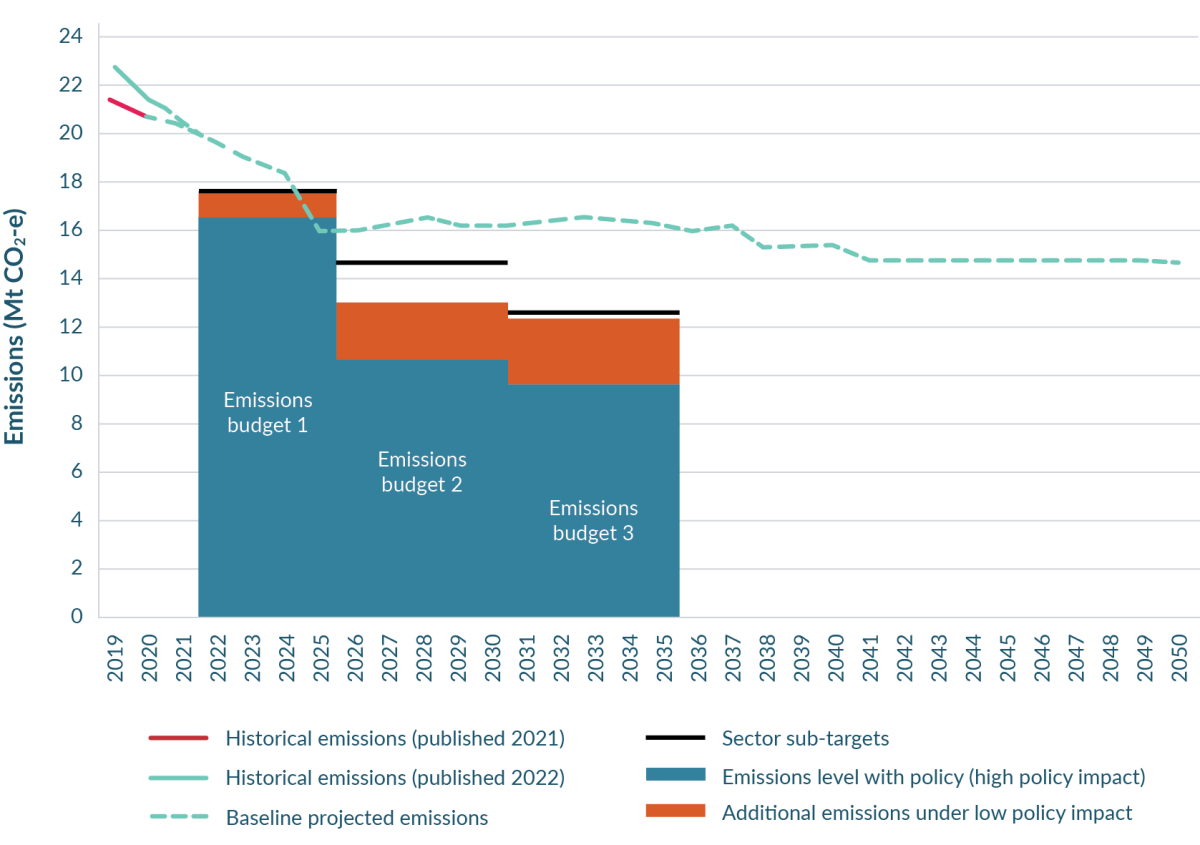
These projections incorporate emissions reductions as a result of Refining NZ’s transition to an import-only terminal from April 2022 and emissions reductions from a potential closure of New Zealand’s Aluminium Smelter in 2024. There is a possibility that the smelter will remain open beyond 2024. This would result in an additional 2.4 Mt CO2-e, 9.3 Mt CO2-e and 3 Mt CO2-e in emissions budgets one, two and three, respectively.
Reducing emissions and building a secure, affordable and sustainable energy system that supports our wellbeing requires a combined effort from all New Zealanders. Businesses, communities and government all have an important role to play.
Local government will need to switch to low-emissions fuels and technologies for council-owned buildings and public facilities, and improve their energy efficiency. Councils also have an important role to play in enabling the development of renewable energy and associated infrastructure via their planning functions – including spatial planning functions under the reformed resource management system.
The private sector (businesses) – Decarbonisation in the energy and industry sectors is dependent on the actions of the private sector. This includes large industrial and manufacturing businesses moving away from fossil fuels, electricity generators accelerating the build of renewable electricity generation and commercial sector businesses providing finance.
Significant levels of investment will be driven from the private sector in order to reduce emissions in Aotearoa’s market-based energy system and industrial sector.
The National Climate Change Risk Assessment (NCCRA) found that climate change could increase risk to electricity generation, transmission and distribution infrastructure.
To maintain the quality and security of electricity supply, the Government needs to ensure policy and regulatory settings help asset owners respond to a changing climate. Electricity generators, retailers and distributors are incentivised, but not required, to prepare for and mitigate risks to their infrastructure, and many have asset management strategies.
The Government is developing indicators to ensure that our energy system remains sustainable, secure, reliable, accessible and affordable as we transition.
The Electricity Authority is also looking at how to ensure the electricity system remains secure and resilient as it evolves in the coming decades.
Generation infrastructure that relies on renewable energy (such as hydro, solar and wind) is already exposed to our complex and temperate climate. Changes to average temperatures, rainfall or wind patterns, and the frequency of extreme weather events, could affect the availability of renewable energy.
Electricity generation companies are already actively assessing and planning to manage climate change risk, however, and it is likely that the diversity of renewable sources powering the national electricity grid will help maintain security of supply.*
Addressing Aotearoa New Zealand’s dry-year risk will further strengthen the resilience of our electricity generation. The New Zealand Battery Project is assessing options for managing dry-year risk. Any resulting infrastructure will be designed to withstand natural and systemic risks.
Extreme weather events and higher temperatures increase the risks to transmission and distribution infrastructure. As a result, this infrastructure needs to accommodate greater electrification and become more resilient to a changing climate.
The Commerce Commission is focused on improving asset management practices, including identifying and managing risk and resilience. It encourages electricity distribution businesses to improve their understanding of how major events and storms will impact their networks.**
Increasing demand flexibility and distributed energy resources will help to manage electricity infrastructure risk. For example, rooftop solar photovoltaic, in-home batteries, small wind turbines, micro-hydro systems and demand-response technology can improve resilience to adverse weather events or when infrastructure is damaged.
Government initiatives that reflect the future role of distributed energy resources include the Māori and Public Housing Renewable Energy Fund [Ministry of Business, Innovation and Employment website].
** Reporting of asset management practices by EDBs: A review of target areas for potential improvements [PDF, 3 MB].

Chapter 11 Energy and industry
May 2022
© Ministry for the Environment